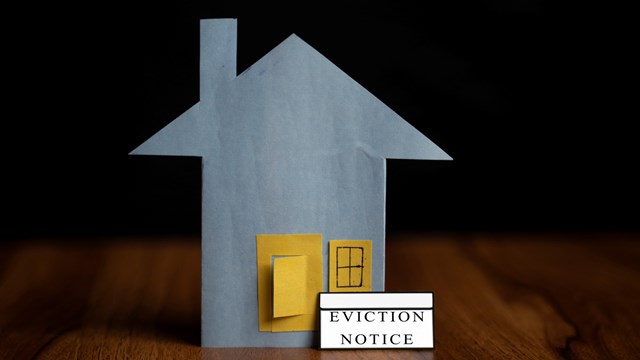
As recently as five years ago, traditional phone logs and Rolodexes were a common part of a managing agent’s daily communications arsenal. Yet, with recent advances in property management software, such anachronistic methods are largely a thing of the past. Today’s tech-savvy manager can handle large volumes of communication, track and prioritize messages, schedule maintenance, and interact with vendors via modern web-based applications. Some of these applications can even serve as one-stop solutions for every aspect of condo communication.
"Used to be, clients would just call you on the phone," says David Baron, senior vice president of Metro Management Development Inc. in Long Island City, "Then they would start to fax you things. And now, you have BlackBerry, texting, emailing, faxing, and phone calls. So there's a huge range of different ways in which communications can be delivered to you."
Proactive Communication
“I’m an old-timer,” says David J. Levy, PCAM, a veteran property manager and president of Sterling Services in Holliston, Massachusetts. “Twenty years ago, everything was ‘put it in writing, put it in writing, put it in writing.’ And people resisted that."
With modern email and broadcast software, real estate management companies have found ways to communicate and document all at the same time. “I think the biggest shift [in recent years],” says Levy, “is the percentage of reactive versus proactive communication. Our goal as an industry is to have no communication reactively, because we’re a fixed-fee business. We’re not like attorneys who are hourly. Attorneys like conflict and complexity. If you’re fixed fee, you want to have people know about an issue in advance, so you don’t have as many questions.”
Messages come in these days from many sources, according to Jerry Kestenbaum of BuildingLink.com—calls, voicemails, emails, email forwards of voicemails left, fax, even sometimes SMS, and occasionally, by letter.
“The response time of a specific manager to specific messages (1) is partly based on their judgment as to which are most urgent (urgent for health and safety, but also sometimes, for political reasons—i.e. a board member). But it is also sometimes based on (2) the medium(s) that a manager has easiest and fastest access to wherever that manager spends the most time—in office or on the go (often, these days, that is email), and (3) when overflow occurs, at that point managers can only reply to what is making “the most noise” in the pile of messages,” according to Kestenbaum.
“At that point it becomes ‘who is getting the most angry at me.’ That is not good,” says Kestenbaum.
But residents and owners do want to be listened to and appreciate proactive communication, says Adam Jernow, a principal with OGI Management in Manhattan. "If a persistent problem has been reported, we need to be able to show our clients that we have taken steps to correct that problem, and we need to be able to document that we have been taking the steps recommended by experts. It has to do with queuing theory—the idea that the acknowledged wait is much better than the unacknowledged wait. If you're waiting on a bank line and no one is saying, 'Next please,' and everybody is just milling about, it's much more frustrating than if you're told, 'We're handling number 56 and you're number 101.' At least you can see that people were moving along."
The same idea applies to communication within a residential building, says Jernow. "It's important to us that the board knows that we are taking steps and that we're communicating to the board, or even a frustrated owner that someone is coming out to look at the problem. And that's also got to do with communicating and managing so much and setting expectations accurately because some problems require multi-step solutions."
More Time for Managers
One of the biggest advantages of using technology in the business of property management is time saving—or at least buying more time for managerial rather than administrative tasks.
Jernow agrees. "All owners...in our buildings have access to our online portal where they can register a task, which immediately sends us an email so that we can, one, be aware of the task. Two, handle it. And three, track the task as the solution to the problem gets monitored. And it's all done through our property management software."
"Property management software is crucial to our operations," Jernow continues. "It tracks payments for us because most payments from owners and renters are made 100 percent online through our portal, which is great for record-keeping because when someone makes a payment, our property management software sees it automatically and logs and applies [it] to the existing balance. We also use it to track bills and show us bills by vendor. So let's say, units one, two, three and four, each owe $1,000 in rent where we can see who's paid, when that payment was made. And then we can also see if the building has paid the Con Ed account for the common hallways. We can also monitor tasks, which could be replacing a window pane or closing an application at a building We even use it to have people sign up for exterminator service monthly, so that we can track who requested exterminator service. And that's all done online, which is great."
Managers are busy professionals, agrees Kestenbaum, and streamlining their communication flow is a big help. “The best approach to addressing the flood of communications is to try as much as possible to ‘disintermediate the manager’ and any others from communications about which they are simply the middle-men or the relayers. That is what BuildingLink seeks to do. By using the database as a way of putting in and taking out information, work orders, guest permissions, important documents-rules-forms, requests for move-ins/move-outs etc, insurance requirements, it allows the different staff of the building to each pick up just the communications that are their responsibilities.”
This, says Kestenbaum, allows the manager to only respond to what and where they are needed. Where a manager has oversight responsibility, he or she is notified, and if the process had broken down (i.e. repair requests that are taking too long to respond to), they can intervene where necessary.
As for board members, it depends on preference, Kestenbaum says. “Board members are very bimodal. There are those that want everything electronic (email plus attachments) and those that are not online often and like everything in paper.” Newer technologies of video-conferencing and even audio-conferencing tend not to be used much in lieu of meetings, he says, although the technology might be used occasionally to include members that are in a remote location.
Simplified Communications
And with newer software, communication—both to and from residents—has been simplified. Residents don’t necessarily have to pick up the phone and call or leave a message with management, or with an answering service. Online residents can put in a maintenance request that gets sent directly to management or building staff.
Another innovation that utilizes the convenience of voicemail with the brevity of texting is what Baron refers to as "shout out" messages. "There's actually a company that provides a service where you to create different groups of people who give you a phone number. You don't talk back. It's not a conversation. It's an outgoing message you're able to record and send out. You can decide the time of day it goes out, and the group that it goes out to. So for example, I can create a group of people who live in a townhouse versus a high-rise tower. I can create a group of people who live on the A side of the building versus the B side of the building. I create a group simply by labeling the group and inserting the names and numbers for that particular group. These types of phone call 'shout outs' are becoming very popular, and they're very nominal in cost. It's basically about $5 an apartment per year, plus some very minimal start-up costs."
To Tweet, or Not to Tweet?
While broadcast software services like AtHomeNet, BuildingLink and AssociationVoice have revolutionized condo communication, other recent web-based technologies have not taken off as some might have predicted. A number of pros say that, unlike many businesses, Facebook and Twitter have not become a major part of their overall communication model. “We do have a page and whatnot for Facebook,” says one property manager, “but it’s more of a marketing tool [than a communication] tool.” And while some condo websites do offer community blogs for their residents, many boards have found such technologies to be less than helpful, often turning into forums for overly-negative, one-way communication. “We didn’t feel we got value out of it,” says Levy of his experience with condo blogging. “It didn’t solve problems.”
Downsides and Limits
Of course, even as advancing technology has made some aspects of property management immeasurably easier, being connected and available 24/7 has its downside for managers as well. Like the rest of corporate America, managers and board members aren’t immune from the curses of modern wireless devices like a BlackBerry or an iPhone.
“Our managers have the BlackBerry, and we’re not sure how to manage that, because they are very happy that they can respond when they want to respond,” says Levy. "But now you have a trustee or a resident who thinks they can send an email at 8 a.m. on a Saturday for a non-safety-related issue, and they expect an answer within five minutes. And then you have employee burnout because there’s now no separation between work and play.”
"Let's say I'm not at my desk," adds Baron. "And a client calls me and gets no answer. So they'll send me an email. I'll see the email, and it takes me 10, 15 minutes to put together what they're looking for and send it to them. In that intervening 15 minutes, I will often get a phone call at my desk asking, 'Did you get my email?' And if I don't answer the phone fast enough, they'll hang up, and call my cellphone. Because of instant messaging and all of these devices that are so quick and transmitting these messages so rapidly, everybody—myself included—wants immediate responses. That's the biggest drawback to all of this."
It's also self-evident that if a resident doesn't own a computer, or isn't versed in using email, all the streamlined digital communication in the world is pretty useless. According to Michael Donuk, director of management for Argo Real Estate LLC in Manhattan, “We normally communicate via memorandums about ongoing projects, and we're nearing a point where all memos can be sent via email. But there are still some residents that don’t have email and require a hard copy of documents. Some buildings do have web sites/portals, where we can post memos about projects or building meetings, etc. This comes in handy, but not all residents have web access, so it's not 100 percent effective just yet."
And in the end, the best software means nothing without competent, thoughtful execution. “What technology does is make existing systems go faster,” notes Levy. “It doesn’t make them better or worse, it makes them faster. So if you have a bad system, you have a faster bad system.” Yet, for seasoned execs like Levy, today’s web-based innovations are proving to be game-changing tools in the day-to-day minutiae of property management.
"The reality is that that your clients—board members and buildings—must take a priority," says Baron. "We always respond to our vendors as well, of course. And in many cases, the issues that the board members are calling you about directly relate to the contractors themselves. Obviously banks that call you are important, vendors are important. I don't think there's any one call that's less important than another, but common sense dictates that if a board member or a shareholder or resident is calling you, these are calls that take priority. They are your clients."
And the professionals agree that sometimes, depending on the message being conveyed, a text message or mass email just isn't the way to go. "The good old-fashioned way of hanging a notice on the bulletin board always works," says Baron, "or putting a notice under a door. Especially if it's an important notice, such as a maintenance increase. I still recommend that those types of things be mailed, because I think people still consider something that comes in the mail to be important. So there's a lot of different ways of communicating."
Matthew Worley is a freelance writer and a frequent contributor to New England Condominium magazine, a Yale Robbins’ publication. Additional reporting by The Cooperator’s David Chiu.






Leave a Comment